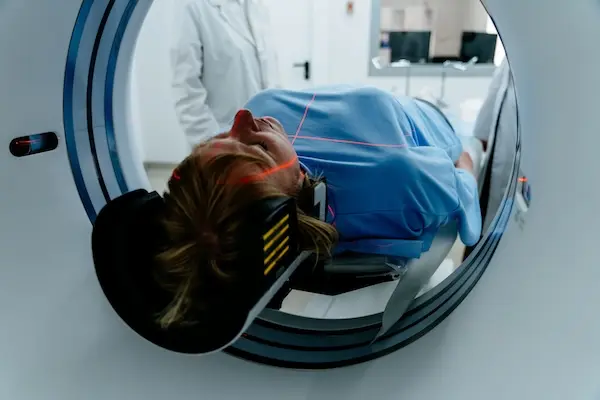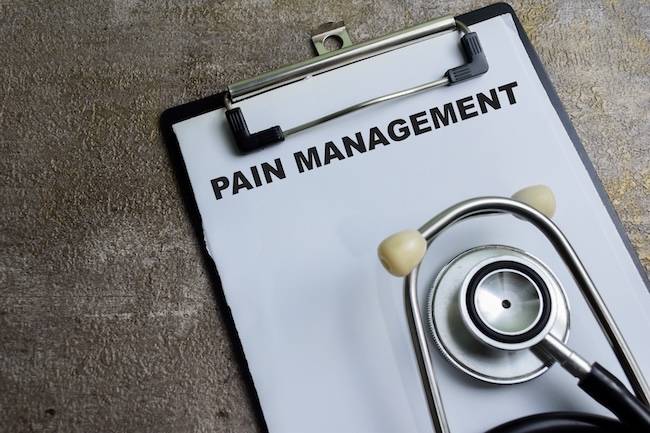Understanding the Importance of Early Evaluation for Cervical Radiculopathy
If you’ve been dealing with persistent neck pain, arm discomfort, or unexplained weakness in your upper extremities, you might be exhibiting signs of a condition that often goes underdiagnosed: cervical radiculopathy. Whether due to a recent auto accident or a long-standing cervical spine issue, the symptoms can be debilitating.
Visiting an experienced auto accident medical clinic can be your first step toward relief. Understanding the need for a cervical radiculopathy evaluation is essential for managing the underlying condition and preventing it from worsening. In this comprehensive guide, we delve deep into cervical radiculopathy and highlight the top signs indicating the need for prompt evaluation and intervention.
Understanding Cervical Radiculopathy
Cervical radiculopathy occurs when a nerve in the neck is irritated or compressed where it branches away from the spinal cord. This compression often results from a cervical disc herniation, cervical disc disease, or cervical spondylosis. The symptoms, collectively known as radicular pain, can extend into the arms and hands, depending on the affected nerve root.
This condition is a type of neuropathy specifically affecting the cervical spine. It often results from structural issues such as disc herniation, spinal tumors, asymptomatic degenerative disk disease, or trauma-induced conditions. It’s crucial to differentiate cervical radiculopathy from lumbar radiculopathy, which affects the lower back and legs.
Common Causes of Cervical Radiculopathy
Cervical radiculopathy, a condition often characterized by pain, numbness, or weakness in the neck and upper extremities, can result from several underlying causes. Understanding these causes is essential for proper diagnosis and treatment. Below are some of the most common contributors to cervical radiculopathy:
- Cervical disc herniation
- Disc degeneration
- Cervical stenosis
- Bone spurs from uncovertebral and facet joints
- Spinal cord compression
- Trauma, especially from auto accidents
A cervical radiculopathy evaluation includes a comprehensive physical examination, magnetic resonance imaging, and possibly nerve conduction studies to determine the presence and severity of nerve root compression. Identifying any of these causes early through a cervical radiculopathy evaluation can significantly reduce the risk of chronic symptoms.
Why You Shouldn’t Ignore the Symptoms
Delaying a cervical radiculopathy evaluation can result in chronic cervical radiculopathy, muscle atrophy, and potentially irreversible nerve root injury. Accurate diagnosis and timely treatment of cervical radiculopathy are essential to prevent long-term disability and enhance quality of life.
Sign 1: Persistent Neck Pain Radiating into the Arm
Neck pain that spreads into the shoulder, arm, or hand is often a telltale sign of cervical radiculopathy. This symptom typically results from inflammation or nerve root impingement and may worsen with certain neck movements.
Associated Conditions:
- Cervical disc herniation causing pressure on the cervical nerve root
- Cervical spine degeneration
- Anterior chest pain due to referred radicular symptoms
Diagnostic Techniques:
- Magnetic resonance imaging to visualize nerve root compression
- Physical examination to assess range of motion and deep tendon reflexes
- Manual therapy to test muscular responses
Sign 2: Weakness in the Shoulder, Arm, or Hand
Weakness in the upper extremity can significantly impair daily activities. This is often due to impaired signal transmission along a compressed or inflamed cervical nerve root.
Evaluative Tools:
- Upper limb tension test
- Neuromuscular assessments such as nerve conduction studies
- Patient self report measures for functional ability
Patients with cervical radiculopathy may drop objects frequently or struggle with tasks like opening jars, which necessitates a thorough cervical radiculopathy evaluation.
Sign 3: Numbness or Tingling in the Fingers or Hand
This sensory loss is due to disrupted signals along the sensory pathways of a compressed nerve. Cervical disc abnormalities are often implicated, especially in older adults with disc degeneration.
Symptoms Based on Nerve Root:
- C5-C6: Thumb and index finger numbness
- C6-C7: Middle finger
- C7-T1: Ring and pinky fingers
These patterns help in diagnosing cervical radiculopathy with greater diagnostic accuracy.
Sign 4: Increased Pain with Neck Movement
Movement-induced pain typically indicates mechanical compression within the cervical spine. Flexion, extension, or lateral bending can intensify symptoms due to changes in the neural foramen space.
Diagnostic Procedures:
- Observation of clinical symptoms during clinical examination
- Trial of cervical traction
- Reactions to cervical collar or cervical epidural injections
Sign 5: Lack of Improvement with Conservative Therapies
If symptoms persist despite physical therapy, cervical traction, or epidural steroid injections, more invasive options may be required. Anterior cervical decompression, anterior cervical discectomy, and cervical discectomy and fusion are common surgical treatment options.
Advanced Diagnostic and Imaging Techniques
A thorough cervical radiculopathy evaluation utilizes advanced diagnostic imaging and nerve studies to pinpoint the source of nerve root compression. To confirm the diagnosis of cervical radiculopathy, a range of assessments is used:
Imaging:
- Magnetic resonance imaging (MRI)
- CT scans
- X-rays for bony anomalies
Functional Tests:
- Upper limb tension test
- Manual therapy assessments
- Deep tendon reflexes testing
Electrophysiological Studies:
- Nerve conduction studies
- Electromyography (EMG)
- Positive sharp waves as indicators of nerve root injury
Treatment of Cervical Radiculopathy
Following a confirmed cervical radiculopathy evaluation, treatment plans can be tailored to address both acute and chronic stages of the condition.
Conservative Treatments:
- Physical therapy and manual therapy to maintain neck mobility
- Use of cervical collar for temporary relief
- Physiotherapy versus wait strategies in early stages
- Cervical traction devices
- Cervical epidural injections for inflammation control
Surgical Treatments:
- Anterior cervical decompression
- Cervical discectomy and fusion
- Removal of posterior longitudinal ligament if involved
Post-Treatment Care:
- Structured rehab programs
- Lifestyle modifications to reduce recurrence
- Use of patient self report measures to track progress
Clinical Guidelines and Systematic Reviews
Clinical practice guidelines emphasize early diagnosis and non-invasive treatments. Reviews in neuro spine, neurosurgery spine, and spine phila pa 1976 confirm that combining imaging, electrophysiology, and clinical examination enhances diagnostic accuracy.
Key Findings:
- Randomized clinical trial data supports early intervention
- Systematic reviews endorse combination therapies
- Multidisciplinary approaches yield better long-term outcomes
When to Seek a Cervical Radiculopathy Evaluation
Persistent neck pain, sensory changes, or upper extremity pain should never be ignored. These symptoms may be the earliest indicators of cervical radiculopathy, a condition that, when left untreated, can progress to more serious and permanent neurological deficits. That’s why it’s crucial to seek a timely and comprehensive cervical radiculopathy evaluation from professionals who specialize in spine and nerve care.
At VeriSpine Joint Centers, our multidisciplinary team is committed to delivering accurate diagnosis and targeted treatment strategies for all stages of cervical radiculopathy—from recent onset cervical radiculopathy to advanced chronic cervical radicular pain. Using advanced imaging techniques, detailed clinical assessments, and patient-centered outcome measures, we tailor care plans to meet your unique needs.
Don’t wait until the pain becomes unbearable or permanent damage sets in. Take control of your health and mobility today. Schedule your cervical radiculopathy evaluation with VeriSpine Joint Centers, where cutting-edge care meets compassionate expertise.
Your path to relief starts here. Contact us 678-782-7999 now to book your evaluation and begin the journey toward a pain-free, empowered life.








